
8350 Patriot Blvd STE B, N. Charleston, SC 29418
1 (844) 538-7890
www.gaslandchef.com
Electric Ceramic Cooktop
Installation Instruction
Model No.: Pro CH1212BS


WARNING! For your safety, the information in this manual must be followed
to minimize the risk of fire or explosion, electric shock, or to prevent property
damage, personal injury, or loss of life.
READ AND FOLLOW THIS SAFETY INFORMATION CAREFULLY.
SAVE THESE INSTRUCTIONS
Safety Precautions
When using electrical appliances, basic safety precautions should be followed,
including the following:
• Use this appliance only for its intended use as described in this manual.
• Do not attempt to repair or replace any part of your cooktop unless it is specifi-
cally recommended in this manual. All other servicing should be referred to a
qualified technician.
• Before performing any service, disconnect the cooktop power supply at the
household distribution panel by removing the fuse or switching off the circuit
breaker.
• Be sure your appliance is properly installed and grounded by a qualified techni-
cian in accordance with the provided installation instructions. This appliance
must be supplied with the proper voltage and frequency, and connected to an
individual, properly grounded branch circuit, protected by a circuit breaker or
fuse acceptable for the indicated wattage on the name plate.
• Have the installer show you the location of the circuit breaker or fuse. Mark it for
easy reference.
• Do not leave children alone-children shold not be left alone or unattended in an
area where an appliance is in use. They should never be allowed to sit or stand
on any part of the appliance.
• Teach children not to play with the controls or any other part of the cooktop.
• Do not allow anyone to climb, stand or hang on the cooktop.
• CAUTION: Items of interest to children should not be stored in cabinets
above a cooktop-children climbing on the cooktop to reach items could be
seriously injured.
• Always keep combustible wall coverings, curtains or drapes a safe distance from
your cooktop.
Name plate location
www.gaslandchef.com
8350 Patriot Blvd STE B, N. Charleston, SC 29418
1 (844) 538-7890
01

• Always keep dishtowels, dish cloths, pot holders and other linens a safe
distance away from your cooktop.
• Always keep wooden and plastic utensils and canned food a safe distance away
from your cooktop. They may become hot and could cause burns.
• Never wear loose-fitting or hanging garments while using the appliance.
Flammable material could be ignited if brought in contact with hot surface
elements and may cause severe burns.
• Use only dry pot holders - moist or damp pot holders on hot surfaces may result
in burns from steam. Do not let pot holders touch hot surface elements. Do not
use a towel or other bulky cloth. Such cloths can catch fire on a hot surface
element.
• For your safety, never use your appliance for warming or heating the room.
• Do not use water on grease fires. Never pick up a flaming pan. Turn the controls
off. Smother a flaming pan on a surface element by covering the pan completely
with a well-fitting lid, cookie sheet or flat tray. Use a multi-purpose dry chemical
or foam-type extinguisher. Flaming grease outside a pan can be put out by
covering with baking soda or, if available, by using a multi-purpose dry chemical
or foam-type fire extinguisher.
• Do not flame foods on the cooktop. If you do flame foods under the hood, turn
the fan on.
• Do not let cooking grease or other flammable materials accumulate on the
cooktop.
• Do not touch surface elements. These surfaces may be hot enough to burn even
though they are dark in color. During and after use, do not touch, or let clothing
or other flammable materials contact the surface elements or areas nearby the
surface elements; allow sufficient time for cooling first. Potentially hot surfaces
include the cooktop and areas facing the cooktop.
• To minimize the possibility of burns, ignition of flammable materials and spillage,
the handle of a container should be turned toward the center of the cooktop
without extending over any nearby surface elements.
• Always turn the surface element control to off before removing the cookware.
• Use proper pan size - select cookware having flat bottoms large enough to cover
the surface element heating element. The use of undersized cookware will
expose a portion of the surface element to direct contact and may result in
ignition of clothing. Proper relationship of cookware to surface element will also
improve efficiency.
• Never leave surface elements unattended at high heat settings. Boilovers cause
smoking and greasy spillovers that may catch on fire.
• Only certain types of glass, glass/ceramic, earthenware or other glazed contain-
ers are suitable for cooktop cooking; others may break because of the sudden
change in temperature.
• Keep an eye on foods being fried at high or medium-high heat settings.
www.gaslandchef.com
8350 Patriot Blvd STE B, N. Charleston, SC 29418
02
1 (844) 538-7890

• Foods for frying should be as dry as possible. Frost on frozen foods or moisture
on fresh foods can cause hot fat to bubble up and over the sides of the pan.
• Use little fat for effective shallow or deep-fat frying. Filling the pan too full of fat
can cause spillovers when food is added.
• If a combination of oils or fats will be used in frying, stir together before heating,
or as fats melt slowly.
• Always heat fat slowly, and watch as it heats.
• Use a deep fat thermometer whenever possible to prevent overheating fat
beyond the smoking point.
• Never try to move a pan of hot fat, especially a deep fat fryer. Wait until the fat is
cool.
• Do not store flammable materials near the cooktop.
• Keep the hood and grease filters clean to maintain good venting and to avoid
grease fires.
• Do not store or use combustible materials, gasoline or other flammable vapors
and liquids in the vicinity of this or any appliance.
• Clean only parts listed in this nser mannal.
• Do not leave paper products, cooking utensils or food on the cooktop when not
in use.
• Keep cooktop clean and free of accumulation of grease or spillovers which may
ignite.
• Never heat unopened food containers. Pressure buildup may make container
burst and cause injury.
• Never leave jars or cans of fat drippings on or near your cooktop.
Radiant Surface Elements
Use care when touching the cooktop. The glass surface of the cooktop will retain
heat after the controls have been turned off.
• Avoid scratching the glass cooktop. The cooktop can be scratched with items
such as sharp instruments, rings or other jewelry and rivets on clothing.
• Never use the glass cooktop surface as a cutting board.
• Do not place or store items on top of the glass cooktop surface when it is not in
use.
• Be careful when placing spoons or other stirring utensils on glass cooktop
surface when it is in use. They may become hot and could cause burns.
• Avoid heating an empty pan. Doing so may damage the cooktop and the pan.
• Do not allow water, other liquids or grease to remain on the cooktop.
www.gaslandchef.com
8350 Patriot Blvd STE B, N. Charleston, SC 29418
1 (844) 538-7890
03

• To minimize the possibility of burns, always be certain that the controls for all
surface elements are at the off position and the entire glass surface is cool
before attempting to clean the cooktop.
• Do not operate the glass surface elements if the glass is broken. Spillovers or
cleaning solution may penetrate a broken cooktop and create a risk of electrical
shock. Contact a qualified technician immediately should your glass cooktop
become broken.
• Clean the cooktop with caution. If a wet sponge or cloth is used to wipe spills on
a hot surface element, be careful to avoid steam burns. Some cleansers can
produce noxious fumes if applied to a hot surface.
• NOTE: We recommend that you avoid wiping any surface element areas until
they have cooled and the indicator light has gone off. Sugar spills are the
exception to this. Please see the Paqe 9 Cleaning the Glass Cooktop section.
• To avoid possible damage to the cooking surface, do not apply the cleaning
cream to the glass surface when it is hot.
• After cleaning, use a dry cloth or paper towel to remove all the cleaning cream
residue.
• Read and follow all instructions and warnings on the cleaning cream labels.
• Use care when touching the cooktop. The glass surface of the cooktop will retain
heat after the controls have been turned OFF.
• Do not stand on the glass cooktop.
• Large scratches or impacts to glass cooktops can lead to broken or shattered
glass.
Features of your cooktop.
Right Surface Element 1200W
Left Surface Element 2500W
Right Surface Element Control Knobs
Left Surface Element Control Knobs
Hot Surface Indicator Light
“On” Indicator Light
Rated Voltage: AC 240V 60Hz or AC 208V 60Hz
Power range: AC 208V to 240V, 60Hz
www.gaslandchef.com
8350 Patriot Blvd STE B, N. Charleston, SC 29418
04
1 (844) 538-7890

Using the surface elements.
Throughout this manual, features and appearance may vary from your model.
How to Set
Push the knob down and turn in either direction to the setting you want. When the
control is in any position other than Off , it may be rotated without pushing it down.
At Off, Hi and Simmer , the control clicks into position. You may hear slight
clicking sounds during cooking, indicating the control is keeping the power level
you set.
The controls for the radiant surface elements can be set anywhere between
Simmer and Hi for an unlimited number of heat settings.
With the infinite switch, the element cycles on and off to maintain your selected
control setting.
The On indicator light will glow when any surface element is on.
A Hot Surface indicator light will glow when any radiant element is turned on and
will remain on until the surface is cooled to approximately 150°F(65°C).
Note:
• It comes on when the element is hot to the touch.
• It stays on even after the element is turned off.
• It glows brightly until the element is cooled to approximately 150°F(65°C).
• Be sure you turn the control knob to Off when you finish cooking.
About the radiant surface elements…
The radiant cooktop features heating elements beneath a smooth glass surface.
Note: A slight odor is normal when a new cooktop is used for the first time. It is
caused by the heating of new parts and insulating materials and will disappear in
a short time.
www.gaslandchef.com
8350 Patriot Blvd STE B, N. Charleston, SC 29418
1 (844) 538-7890
05

Note: On models with light-colored glass cooktops, it is normal for the cooking
zones to change color when hot or cooling down. This is temporary and will
disappear as glass cools to room temperature.
The surface element will cycle on and off to maintain your selected control setting.
It is safe to place hot cookware (from the oven or surface) on the glass cooktop
when the surface is cool.
Even after the surface elements are turned off, the glass cooktop retains enough
heat to continue cooking.
To avoid overcooking, remove pans from the surface elements when the food is
cooked.
Avoid placing utensils that could become hot or plastics that could melt on the
surface element until it has cooled completely.
• Always center the pan on the surface element you are using.
• Never cook directly on the glass. Always use cookware.
• Water stains (mineral deposits) are removable using the cleaning cream or full
strength white vinegar.
• Use of window cleaner may leave an iridescent film on the cooktop. The clean-
ing cream will remove this discoloration.
• Don’t store heavy items above the cooktop. If they drop onto the cooktop, they
can cause damage.
• Do not use the surface as a cutting board.
• Do not slide cookware across the cooktop because it can scratch the glass. The
glass is scratch-resistant, not scratch proof.
Surface elements cycle on and off
Surface elements will cycle on and off to maintain the temperature you have
selected.
All radiant surface elements have a temperature limiter that protects the glass
cooktop from getting too hot.
The temperature limiter may cycle the elements off while cooking if :
• The pan boils dry.
• The pan bottom is not flat.
• The pan is off-center.
• There is no pan on the element.
www.gaslandchef.com
8350 Patriot Blvd STE B, N. Charleston, SC 29418
06
1 (844) 538-7890

Selecting types of cookware.
The following information will help you choose cookware which will give good
performance on glass cooktops.
Cookware characteristics
• Aluminum: heats and cools quickly. Frying, braising, roasting. May leave metal
markings on glass.
• Cast Iron: on a glass cooktop heats and cools slowly, but retains heat and cooks
evenly.
• Copper: tin heats and cools quickly. Gourmet cooking, wine sauces, egg dishes.
• Enamel ware: response depends on base metal. Not recommended. Imperfec-
tions in enamel may scratch cooktop.
• Glass Ceramic: heats and cools slowly. Not recommended. Heats too slowly.
Imperfections in enamel may scratch cooktop.
• Stainless Steel: heats and cools moderately. Soups, sauces, vegetables, and
general cooking.
Selecting types of cookware.
For best results
• Place only dry pans on the surface elements. Do not place lids on the surface
elements, particularly wet lids.
• Do not use woks that have support rings. This type of wok will not heat on glass
surface elements.
• We recommend that you use only a flat-bottomed wok. They are available at
your local retail store. The bottom of the wok should have the same diameter as
the surface element to ensure proper contact.
• Some special cooking procedures require specific cookware such as pressure
cookers, deep-fat fryers, etc. All cookware must have flat bottoms and be the
correct size.
Check pans for flat bottoms by
using a straight edge.
Do not place wet pans on the
glass cooktop.
Do not use woks with support
rings on the glass cooktop.
Use flat-bottomed woks on the
Pans with rounded, curved, ridged or warped bottoms are not recommended.
Right!
Do not operate the cooktop
without utensil on the hotplate.
www.gaslandchef.com
8350 Patriot Blvd STE B, N. Charleston, SC 29418
1 (844) 538-7890
07

Observe the following points in canning
Pots that extend beyond 1″ of the surface element’s circle are not recommended
for most surface cooking. However, when canning with water-bath or pressure
canner, larger-diameter pots may be used. This is because boiling water tempera-
tures(even under pressure) are not harmful to the cooktop surfaces surrounding
the surface elements.
HOWEVER, DO NOT USE LARGE- DIAMETER CANNERS OR OTHER
LARGE-DIAME-TER POTS FOR FRYING OR BOILING FOODS OTHER THAN
WATER. Most syrup or sauce mixtures-and all types of frying-cook at tempera-
tures much higher than boiling water. Such temperatures could eventually harm
the glass cooktop surfaces.
1. Be sure the canner fits over the center of the surface element. If your cooktop
or its location does not allow the canner to be centered on the surface element,
use smaller-diameter pots for good canning results.
2. Flat-bottomed canners must be used. Do not use canners with flanged or
rippled bottoms(often found in enamelware) because they don’t make enough
contact with the surface elements and take a long time to boil water.
3. When canning, use recipes and procedures from reputable sources. Reliable
recipes and procedures are available from the manufacturer of your canner;
manufacturers of glass jars for canning, and the United States Department of
Agriculture Extension Service.
4. Remember that canning is a process that generates large amounts of steam.
To avoid burns from steam or heat, be careful when canning.
Note: If your house has low voltage, canning may take longer than expected,
even though directions have been carefully followed. The process time will be
shortened by:
a. Using a pressure canner and
b. Starting with HOT tap water for fastest heating of large quantities of water.
CAUTION:
• Safe canning requires that harmful microorganisms are destroyed and that the
jars are sealed completely. When canning foods in a water-bath canner, a gentle
but steady boil must be maintained for the required time. When canning foods in
a pressure canner, the pressure must be maintained for the required time.
• After you have adjusted the controls, it is very important to make sure the
prescribed boil or pressure levels are maintained for the required time.
• Since you must make sure to process the canning jars for the prescribed time,
with no interruption in processing time, do not can on any cooktop surface
element if your canner is not flat.
www.gaslandchef.com
8350 Patriot Blvd STE B, N. Charleston, SC 29418
08
1 (844) 538-7890

Important:
• Before cleaning, make sure all controls are off and the cooktop is cool.
• It is recommended to first use soap, water and a soft cloth or sponge unless
otherwise noted. Do not use abrasive cleaning products. Always follow label
instructions on cleaning products.
Ceramic glass
The ceramic glass should be cleaned regularly, preferably after each use.
Important: To avoid damaging the cooktop, do not use steel wool, abrasive
powder cleansers, chlorine bleach, rust remover or ammonia.
To Clean the Ceramic Glass Cooktop:
1. Remove food/residue with a cooktop scraper (not included).
• For best results, use the cooktop scraper while the cooktop is still warm, but
not hot to the touch.
• It is recommended to wear an oven mitt while scraping the warm cooktop.
• Hold the cooktop scraper at a 45 degree angle against the glass surface and
scrape the residue. It will be necessary to apply pressure in order to remove
the residue.
• Allow the cooktop to cool down completely before proceeding to Step 2.
2. Apply a few drops of cooktop cleaner to the affected areas.
• Rub cooktop cleaner onto the cooktop surface with a nylon or similar cooktop
cleaning pad. Some pressure is needed to remove stubborn stains.
• Allow the cleaner to dry to a white haze before proceeding to Step 3.
3. Polish with a clean, dry cloth or a clean, dry paper towel.
Smudges from pans with an aluminum bottom
Cleaning Method:
A cloth dampened in vinegar
Control knobs
• Pull knobs straight away from control panel to remove.
• When replacing knobs, make sure knobs are in the Off position.
Cleaning Method:
Soap and water or dishwasher
Note: Do not use steel wool, abrasive cleansers or oven cleaner. Do not soak
knobs.
www.gaslandchef.com
8350 Patriot Blvd STE B, N. Charleston, SC 29418
1 (844) 538-7890
09

Control panel
Cleaning Method:
Glass cleaner and soft cloth or sponge: Apply glass cleaner to soft cloth or
sponge, not directly on panel.
Note: Do not use abrasive cleaners, steel-wool pads, gritty washcloths or some
paper towels. Damage may occur.
BEFORE YOU BEGIN Read these instructions completely and carefully.
• Important — Save these instructions for local inspector’s use.
• Important — Observe all governing codes and ordinances.
• Note to installer – Be sure to leave these instructions with the consumer.
• Note to consumer – Keep these instructions for future reference.
• Product failure due to improper installation is not covered under the warranty.
WARNING: This appliance must be properly grounded.
• ATTENTION INSTALLER — ALL COOKTOPS MUST BE HARD WIRED
(DIRECT WIRED) INTO AN APPROVED JUNCTION BOX. A “PLUG AND
RECEPTACLE” IS NOT PERMITTED ON THESE PRODUCTS.
• Proper installation is the responsibility of the installer and product failure due to
improper installation is NOT covered under warranty.
Important Safety Instructions
For your safety
• For Personal Safety, remove house fuse or open circuit breaker before begin-
ning installation. Failure to do so could result in serious injury or death.
• Be sure your cooktop is installed properly by a qualified installer or service
technician.
• To eliminate the risk of burns or fire due to reaching over heated surface
elements, cabinet storage located above the surface units should be avoided. If
cabinet storage space is to be provided, the risk can be reduced by installing a
range hood that projects horizontally a minimum of 5″ beyond the bottom of the
cabinets. Cabinet installation above the cooktop may be no deeper than 13″.
• Make sure the cabinets and wall coverings around the cooktop can withstand
the temperatures(up to 200°F(93°C)) generated by the cooktop.
• The cooktop should be easy to reach and lighted with natural light during the
day.
www.gaslandchef.com
8350 Patriot Blvd STE B, N. Charleston, SC 29418
10
1 (844) 538-7890

• Always disconnect the electrical service to the cooktop before repairing or
servicing the cooktop.This can be done by disconnecting the fuse or circuit
breaker. Failure to do this could result in a dangerous or fatal shock. Know
where your main disconnect switch is located. If you do not know, have your
electrician show you.
• State of California Proposition 65 Warnings
WARNING This product contains chemicals known to the State of California to
cause cancer, birth defects or other reproductive harm.
Electrical Requirements
This appliance must be supplied with the proper voltage and frequency, and
connected to an individual, properly grounded branch circuit, protected by a circuit
breaker or a time delay fuse as noted on name plate.
We recommend you have the electrical wiring and hookup of your cooktop
connected by a qualified electrician. After installation, have the electrician show
you where your main cooktop disconnect is located.
Installation Instructions
Refer to the name plate on your cooktop for the KW rating for your cooktop.
Pre-installation checklist
WARNING The electrical power to the cooktop supply line must be shut off
while connections are being made. Failure to do so could result in serious injury
or death.
A. When preparing cooktop opening, make sure the inside of the cabinet and the
cooktop do not interfere with each other. (See section on preparing the
opening.)
B. Remove packaging materials and literature package from the cooktop before
beginning installation.
C. Remove installation instructions from literature pack and read them carefully
before you begin. Be sure to place all literature, user mannal, installations,
etc. in a safe place for future reference.
D. Make sure you have all the tools and materials you need before starting the
installation of the cooktop.
E. Your home must provide the adequate electrical service needed to safely and
properly use your cooktop. (Refer to section on electrical requirements.)
www.gaslandchef.com
8350 Patriot Blvd STE B, N. Charleston, SC 29418
1 (844) 538-7890
11

F. When installing your cooktop in your home, make sure all local codes and
ordinances are followed exactly as stated.
G. Make sure the wall coverings, countertop and cabinets around the cooktop can
withstand heat(up to 200°F(93°C)) generated by the cooktop.
Parts included
• Foam tape
• 2 Hold-down brackets
• 2 Thumbscrews
• Mounting template
Installation Instructions
Preparing the opening
• The following MINIMUM clearance dimensions must be maintained.
If a 30″ clearance between the cooking surface and overhead combustible
materials or metal cabinets cannot be maintained, a minimum clearance of 24″
is required and the underside of the cabinets above the cooktop must be
protected with not less than 1/4″-thick flame-retardant millboard covered with not
less than No. 28 MSG sheet steel, 0.015″-thick stainless steel, 0.024″-thick
aluminum, or 0.020″-thick copper.
• Overall cooktop dimensions
• One and one-half inches (1-1/2″) minimum vertical clearance between the
cooktop bottom and any combustible surfaces.
• Installations dimensions and clearances
To ensure accuracy, it is best to use template when cutting the opening in the
counter.
19-7/8
Cooktop
21-1/2
15-7/8
17-1/8
3-1/4
www.gaslandchef.com
8350 Patriot Blvd STE B, N. Charleston, SC 29418
12
1 (844) 538-7890

1-1/2 Min.
Vertical Clearance
A
C
B
D
EF
F
H
G
1-3/4″
2″
2-3/4″
MIN. clearance from cutout to left or right side walls
MIN. from front edge of cutout and front edge of countertop
MIN. between cutout and the wall behind the cooktop
Width of cutout
Depth of cutout
20-1/8″
16-1/8″
A
B
C
D
E
F
G
H
13″
18″
MAX.depth of unprotected overhead cabinets
30″
MIN. clearance from countertop to unprotected overhead surface
MIN. height from countertop to nearest cabinet on either side of unit
www.gaslandchef.com
8350 Patriot Blvd STE B, N. Charleston, SC 29418
1 (844) 538-7890
13

Horizonta installation with controls at the front
In this installation, the cooktop must be installed with the control knobs toward the
front edge.
Make sure the wall coverings, countertop and cabinets around the cooktop can
withstand heat(up to 200°F(93°C)) generated by the cooktop.
Installing the cooktop
1. Installing the junction box
Install an approved junction box where it will be easily reached through the
front of the cabinet where the cooktop will be located. The cooktop conduit is
51″ long.
Wall coverings,
cabinets and
countertop must
withstand heat up
to 200°F
(93°C)
.
Install junction box so
that it can be reached
through the front of the
cabinet.
5
Min.
www.gaslandchef.com
8350 Patriot Blvd STE B, N. Charleston, SC 29418
14
1 (844) 538-7890

Important:
The junction box must be located where it will allow considerable slack in the
conduit for serviceability.
2. Protect surface of cooktop
Place a towel or tablecloth onto the countertop. Lay the cooktop upside down
onto the protected surface.
3. Attach foam tape
Apply the foam tape around the outer edge of the glass. Do not overlap the
foam tape.
4. Locate mounting parts
On the underside of the cooktop, you will find the hex screws. Remove and use
these hex screws to mount the brackets at these two locations. Do not tighten.
Turn the bracket inward to avoid interference when dropping the cooktop into
the countertop.
Bottom
of
Cooktop
Foam Tape
FoamTape
Cooktop Glass
Cloth under Cooktop
Bottom of Cooktop
Hex Screws
www.gaslandchef.com
8350 Patriot Blvd STE B, N. Charleston, SC 29418
1 (844) 538-7890
15

5. Insert cooktop into cutout
Insert the cooktop centered into the cutout opening. Make sure the front edge
of the countertop is parallel to the cooktop. Make final check that all required
clearances are met.
6. Attach hold-down brackets to cabinet
Open the cabinet door. Rotate the brackets to overlap with the underside of the
countertop. Then tighten the hex screw. Install the thumbscrew until it touches
the bottom of the countertop.
Important: Turn the thumbscrew until it touches the bottom of the countertop. Do
not overtighten.
Cooktop
Cooktop Base
Cooktop
Countertop
Thumbscrew
Bracket
Hex Screw
17
www.gaslandchef.com
8350 Patriot Blvd STE B, N. Charleston, SC 29418
16
1 (844) 538-7890

Installing -electrical connections
A. When making the wire connections, use the entire length of conduit provided.
The conduit must not be shortened.
B. With the cooktop in place, open the front of the cabinet door.
C.Insert the wires from the conduit through the opening of the junction box.
D. Connect the red and black leads from the cooktop conduit to the corresponding
leads in the junction box.
E. Once the connections are made, secure wires together using wire nuts.
Grounding instructions:
The bare ground wire in the conduit is connected to the cooktop frame. Effective
January 1, 1996, the National Electrical Code will not permit grounding through
neutral. If used in new construction after January 1, 1996 or in a mobile home,
recreational vehicle or if local codes do not permit grounding through the neutral
white lead, attach the appliance grounding lead(green or copper) to the residence
grounding conductor (green or bare copper) in accordance with local codes.
When connecting to a 3 conductor branch circuit, if local codes permit, connect
the bare ground connector lead of the cooktop to the branch circuit neutral(gray or
white in color).
Strain Relief Clamp
Black
Red
Ground
Black
Red
Ground wire location
Strain Relief Clamp
Black
Red
Ground
www.gaslandchef.com
8350 Patriot Blvd STE B, N. Charleston, SC 29418
17

Important:
If the cooktop is being installed into a blind counter(one with no cabinet opening
below), wire connections must be made before putting the cooktop into the cutout
opening.
1. Pre-test checklist
A. Remove all protective film, if present, and anystickers.
B. Check to be sure that all wiring is secure and not pinched or in contact with
moving parts.
C. Check level of appliance.
D. Check that the cooktop is properly grounded.
2. Operation checklist
A. Remove all items from the top of the cooktop surface.
B. Turn on the power to the cooktop. Verify that all surface burners operate
properly.
C. Check that the circuit breaker is not tripped nor the house fuse blown.
D. Check that conduit is securely connected to the junction box.
E. See troubleshooting list.
Note to electrician:
The power leads supplied with this appliance for connections to larger gauge
household wiring. The insulation of these leads is rated at temperatures much
higher than the temperature rating of household wiring. The current carrying
capacity of a conductor is governed by the wire gauge and also
the temperature rating of the insulation around the wire.
Note: ALUMINUM WIRING
• WARNING: IMPROPER CONNECTION OF ALUMINUM HOUSE WIRING TO
THE COPPER LEADS CAN RESULT IN A SERIOUS PROBLEM.
• Splice copper wires to aluminum wiring using special connectors designed for
joining copper to aluminum and follow the manufacturer’s recommended
connector procedure closely.
Note: Wire used, location and enclosure of splices, etc., must conform to good
wiring practice and local codes.
www.gaslandchef.com
8350 Patriot Blvd STE B, N. Charleston, SC 29418
18
1 (844) 538-7890
La page est en cours de chargement...
La page est en cours de chargement...
La page est en cours de chargement...
La page est en cours de chargement...
La page est en cours de chargement...
La page est en cours de chargement...
La page est en cours de chargement...
La page est en cours de chargement...
La page est en cours de chargement...
La page est en cours de chargement...
La page est en cours de chargement...
La page est en cours de chargement...
La page est en cours de chargement...
La page est en cours de chargement...
La page est en cours de chargement...
La page est en cours de chargement...
La page est en cours de chargement...
La page est en cours de chargement...
La page est en cours de chargement...
La page est en cours de chargement...
La page est en cours de chargement...
La page est en cours de chargement...
La page est en cours de chargement...
La page est en cours de chargement...
La page est en cours de chargement...
La page est en cours de chargement...
La page est en cours de chargement...
La page est en cours de chargement...
-
 1
1
-
 2
2
-
 3
3
-
 4
4
-
 5
5
-
 6
6
-
 7
7
-
 8
8
-
 9
9
-
 10
10
-
 11
11
-
 12
12
-
 13
13
-
 14
14
-
 15
15
-
 16
16
-
 17
17
-
 18
18
-
 19
19
-
 20
20
-
 21
21
-
 22
22
-
 23
23
-
 24
24
-
 25
25
-
 26
26
-
 27
27
-
 28
28
-
 29
29
-
 30
30
-
 31
31
-
 32
32
-
 33
33
-
 34
34
-
 35
35
-
 36
36
-
 37
37
-
 38
38
-
 39
39
-
 40
40
-
 41
41
-
 42
42
-
 43
43
-
 44
44
-
 45
45
-
 46
46
-
 47
47
-
 48
48
dans d''autres langues
Documents connexes
Autres documents
-
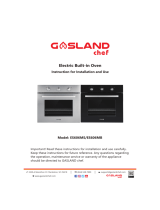 GASLAND ES606MB Manuel utilisateur
GASLAND ES606MB Manuel utilisateur
-
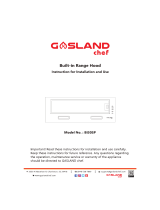 GASLAND 30" Range Hood, Chef BI30SP Built-in 30 Inch Range Hoods, 3 Speed 450 CFM Stainless Steel Ducted Exhaust Kitchen Hood Fan, Push Button Control, LED Lights, Aluminum Mesh Filters Manuel utilisateur
GASLAND 30" Range Hood, Chef BI30SP Built-in 30 Inch Range Hoods, 3 Speed 450 CFM Stainless Steel Ducted Exhaust Kitchen Hood Fan, Push Button Control, LED Lights, Aluminum Mesh Filters Manuel utilisateur
-
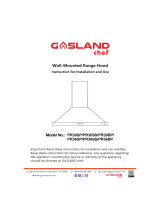 GASLAND 30" Range Hood, Chef PR30SP 30-inch Stainless Steel Wall Mount Ducted Kitchen Hood, 3 Speed 450-CFM Push Button Control Exhaust Hood Fan, Convertible Chimneys, LED Lights, Aluminum Mesh Filter Manuel utilisateur
GASLAND 30" Range Hood, Chef PR30SP 30-inch Stainless Steel Wall Mount Ducted Kitchen Hood, 3 Speed 450-CFM Push Button Control Exhaust Hood Fan, Convertible Chimneys, LED Lights, Aluminum Mesh Filter Manuel utilisateur
-
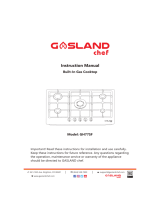 GASLAND GH77SF Manuel utilisateur
GASLAND GH77SF Manuel utilisateur
-
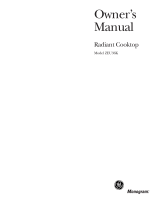 GE Monogram GEZEU36KSKSS Mode d'emploi
GE Monogram GEZEU36KSKSS Mode d'emploi
-
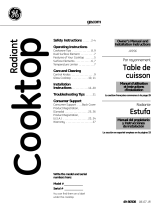 Mabe Canada JP256 Manuel utilisateur
Mabe Canada JP256 Manuel utilisateur
-
GE GEJP256BMBB Le manuel du propriétaire
-
Camplux AY132 Series Manuel utilisateur
























































